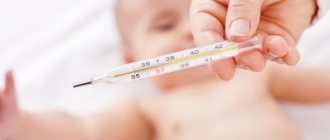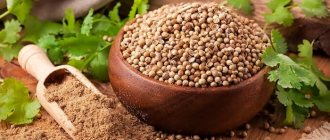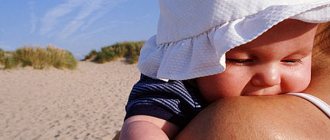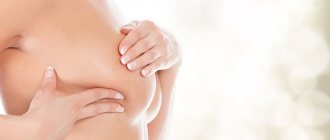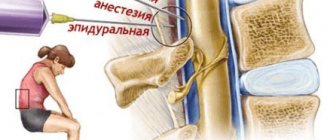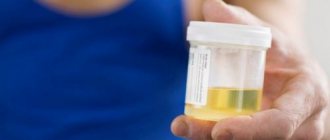If during pregnancy you did not deny yourself a piece of your favorite cake and other delicacies, then after the birth of your child you still wonder whether a nursing mother can have sweets? We will tell you about what sweets you can eat while breastfeeding.
Let us remind you that we previously wrote about whether a nursing mother can have ice cream.
During breastfeeding, a woman’s body is depleted, spending a lot of energy on milk production, and the best way to increase energy, as you know, are carbohydrates. Sweets contain them in abundance. Sweets during breastfeeding not only give the mother strength, but also improve her emotional state and even increase lactation. However, this does not mean that a mother can eat any sweets without harming her baby. Let's figure out what sweets a nursing mother can eat?
About the dangers of sweets
Of course, any mother who breastfeeds her baby is well aware that there should be very little sweets in her diet. It is quite obvious that foods containing large amounts of sugar and other fast carbohydrates are harmful to women.
Excess sweets and baked goods, which she abuses, can lead to excess weight. In addition, sweets are detrimental to tooth enamel, which is especially easily destroyed during this period, because a significant part of the calcium consumed is necessary for the synthesis of breast milk.
In addition, excess sugar can affect the baby's digestion, causing bloating and colic. But why do mothers want sweets so much?
There are several reasons:
- Constant stress, overwork, fear that “something is wrong” with the baby, many try to snack on sweets, since it is sweets that contribute to the production of serotonin, a hormone responsible for positive emotions.
- It is recommended to drink tea before feeding. However, not everyone likes sweetened tea, as well as biscuits and crackers, which are considered a safe addition to tea drinking. Sometimes a nursing mother wants unhealthy sweets solely out of a sense of contradiction.
What to give up
When breastfeeding, foods that may be harmful to the baby should be avoided. You also need to take into account that the food that the mother eats changes the taste of the milk. Very sour, salty, spicy foods will make the milk worse, and the baby may refuse to breastfeed. Avoid excess spices with strong odors, such as raw onions and garlic.
You need to be careful with some products. Large portions of white cabbage, beans, and peas can cause stomach upset in a child, and fatty pork, sour cream, and nuts will make the milk too thick.
Pediatricians recommend that nursing mothers exclude from the diet:
- Fatty, spicy, salty, sour and smoked dishes
- Cocoa and coffee
- Citruses and exotic fruits and vegetables
- Mushrooms and legumes
- Fresh baked goods from yeast dough
- Canned food
- Red berries
- Desserts with rich cream.
If you really want to
Many mothers, however, decide to consume various types of sweets, trying to choose the ones that are most natural in composition. If your baby is already over three months old, you can little by little try different foods that are new to him. Perhaps one or two candies will be less harmful for the baby than the mother’s lack of a good mood.
However, of course, when introducing a new product for your baby into your diet, we do it thoughtfully, namely:
- when the baby is healthy;
- We don’t try anything new on this day;
- after we’ve tasted the sweets (we don’t get carried away, we limit ourselves to just one thing to begin with), we don’t touch them for a day or two and watch the baby’s reaction;
- even if everything worked out well, we keep it in moderation and remember about the baby’s health and our own figure.
Chocolates during breastfeeding - Mom's news
During lactation, the female body intensively consumes glucose from plasma, which explains the constant desire to indulge in sweets.
A responsible approach to the nurse's diet requires careful attention to the choice of treats, and the question often arises: is it possible to eat chocolates while breastfeeding. Although chocolate is a stimulant of positive emotions, producing the happiness hormone serotonin, if the rules are not followed, its consumption can be harmful to health.
Chocolates: benefits and harms for mothers during lactation
Chocolates are a popular treat since childhood, both on holidays and on weekdays. They give people a good mood and bring joy. In our country, stores provide a huge range of chocolates. The choice remains up to the taste preferences of consumers.
A nursing mother must understand that her choice must be correct, since candies are filled with a variety of fillings that can negatively affect the baby’s well-being.
The beneficial properties of chocolates, in addition to pleasure, are considered to be the supply of useful substances to the body:
- Glucose to fuel the brain.
- Vitamins, microelements, fiber.
It is worth recalling the possible harm from consuming this product:
- The occurrence of allergic reactions.
- Fungal fermentation.
- High glycemic index.
- Problems with tooth enamel.
Such manifestations can cause serious diseases - thrush, diabetes, obesity, caries, diathesis, allergies.
Pediatricians recommend starting to gradually consume chocolates in limited quantities and only when the baby adapts and gradually gets used to the introduction of new products into the mother’s diet. And before you try the candy, you need to make sure that its ingredients are of good quality and naturalness, and inquire about its composition. Naturally, you should not buy or consume sweets with alcohol or a large number of different additives.
The composition of chocolates and its effect on the body of a nursing mother and baby
To understand in more detail what the composition of this or that type of chocolate candy is, you must first choose which filling will bring the maximum benefit.
What fillings do chocolates have?
- Nut, roasted;
- Waffle;
- With milk syrup fudge;
- With preserved fruits, liqueurs;
- Jelly, marmalade;
- Multilayer, praline;
- With dried fruits, berries;
- With butter creams.
There are also truffles that have no filling and consist entirely of dark chocolate. The first tests, after the baby is 4-5 months old, are best done with truffles, because they have a monosyllabic composition: cocoa butter, cocoa mass and cocoa powder. In this case they will be the most harmless.
Filled sweets contain many different components. This abundance creates certain difficulties in observing their effect on the state of the body.
Therefore, it is safer to eat sweets with fruit at first:
- Cherries, dried apricots, prunes (exotic fruits - mango, pineapple or lime are excluded).
- You can also try candies with jelly fillings; they contain fruit and berry puree, pectin, and gelatin.
It is better to avoid nut, honey, and grilled sweets at first, because, according to doctors, they are at risk.
After studying the composition of chocolate candies, we can conclude that in fairly moderate quantities, 1-2 candies per day, with careful selection, when preference is given to natural and high-quality ingredients, their consumption is acceptable.
Various flavoring additives, flavors, dyes, flavor enhancers and preservatives in sweets can lead to negative reactions in the baby's body. It is recommended to carefully monitor the baby’s health and make notes about any changes in a food diary.
At the slightest sign of anxiety, red rashes on the skin, colic, excessive gas, bloating, consolidation of the baby's stool or stomach upset, you should stop eating sweets and seek help from a doctor.
What a woman needs to remember during lactation
When answering the question whether you can eat chocolates while breastfeeding, it is important not to forget the following: if the choice is made correctly and wisely, then you can expect positive emotions from eating chocolates in limited quantities.
In addition, replenishment of the physiological needs of mother and child with an enriched mineral-vitamin complex: calcium, magnesium, iron, potassium, sodium, phosphorus, vitamins B, E, PP, organic acids, dietary fiber.
These beneficial substances participate in energy metabolism, regulate the acid-base environment, increase bone mineralization, activate hematopoiesis, and eliminate the risks of rickets and anemia. This means that their use, without forgetting about a sense of proportion and in the absence of an allergy to the product, is quite acceptable.
mama-news.ru
Homemade candy “Cow”
Of course, none of us has the ability to control the technological process of making our favorite sweets. However, you can enjoy the taste of Korovka sweets while breastfeeding if you cook them in your kitchen. It will not only be much tastier than a ready-made treat, but also much healthier.
In addition, the skill of preparing the safest desserts will definitely come in handy when your baby grows up and you want to pamper him with sweets.
Of course, on the vast expanses of the Internet you can easily find a huge number of similar recipes. In this article we will study the simplest of them - after all, a nursing mother does not have much free time.
Homemade nursing cake recipes
Carrot cake with nuts
- Grated carrots – 2 tbsp;
- Chopped soaked walnuts - 1 tbsp.;
- Flour – 1.5 tbsp;
- Sour cream – 1 tbsp.;
- Chicken egg – 2 pcs.;
- Sugar – 1 tbsp;
- Butter.
Mix ½ cup sugar with eggs, then add flour, add walnuts and carrots. Mix the resulting dough well and place in a baking dish. The mold must first be greased with butter. Bake the base at 180 degrees for 40 minutes.
Mix the remaining sugar with sour cream. Wait until the finished cake has cooled and cut it in half. Grease the bottom part well with sour cream, place the second cake layer and soak the cake on top.
Curd cake with apples
- Cottage cheese – 200 gr;
- Green apple – 2 pcs.;
- Chicken egg - 1 pc.;
- Flour – 300 gr;
- Butter – 100 g;
- Sugar to taste.
Mix butter with egg yolk and sugar. Then add protein and flour to the mixture. Knead the dough and spread the curd filling on top. Peel the apples and cut into slices. Place the slices on the workpiece and bake the dish for 10 minutes in the oven at 180 degrees.
Diet cake without flour
- Applesauce without sugar – 300 g;
- Peeled soaked walnuts – 100 g;
- Oatmeal – 1.5 cups;
- Lemon juice – 1 tbsp. spoon;
- Chicken egg – 1 pc.;
- Dark natural chocolate – 100 g;
- Boiling water – 60 ml;
- Sugar – 1 tbsp;
- Butter.
Grind the nuts and flour into flour using a coffee grinder or blender. Pour ¾ cup sugar into the mixture, pour in lemon juice and add applesauce. Stir the mixture until smooth. Grease a baking dish with butter. Place the prepared pan in the oven and bake for 30 minutes at 180 degrees.
To prepare the cream, break the chocolate into small pieces, pour boiling water over it and melt over low heat. Beat the egg white with the remaining sugar, and add the yolk to the prepared liquid chocolate. Pour the chocolate mixture into the whipped egg whites, stir and leave in the refrigerator for 15-20 minutes. Spread the finished cooled cake evenly with chocolate cream. Place the cake in the refrigerator for three hours.
Yogurt cake with apples
- Apples – 4 pieces;
- Flour – 1.5 tbsp;
- Natural yogurt – 1 tbsp;
- Chicken egg – 2 pcs.;
- Lemon – ½ piece;
- Sugar – ⅔ tbsp.;
- Vegetable oil – ¼ tbsp.;
- Butter.
Mix yogurt with sugar, add flour to the resulting mixture and stir, pour in vegetable oil and beat with a mixer until smooth. Peel and finely chop the apples, grate the lemon. Add apples and lemon to yogurt mixture. Grease a baking dish with oil and place the resulting dough inside. Bake at 180 degrees for 30-40 minutes.
Diet cheesecake
- Low-fat cottage cheese – 400 g;
- Low-calorie cookies – 150 g;
- Natural yoghurt – 350 ml;
- Natural apple juice – 50 ml;
- Chicken egg – 2 pcs.;
- Lemon – ½ piece;
- Starch – 1.5 tbsp. spoons;
- Sugar – 3 tablespoons;
- Butter.
Grind the cookies into crumbs using a blender and mix with apple juice. Mash the resulting mass with a fork. Grease the mold with oil, place the mixture inside and compact it tightly, put it in the refrigerator. To prepare the filling, beat cottage cheese and yogurt in a blender. Grate the lemon and add to the curd and yogurt mixture. Beat the mixture again.
Beat the egg and starch separately until smooth, pour onto the base. You can cook cheesecake in the oven only in a water bath! To do this, place the cake pan in a saucepan with boiling water, and the water should reach half of the pan. Then the structure is sent to the oven and left for an hour at a temperature of 180 degrees. After cooking, do not immediately remove the dish from the oven! When the cake has cooled, remove it and leave it in the refrigerator for four hours.
Recommendations for use during lactation
During lactation, you need to limit the amount of sweets in your diet. You can introduce sweets 3 months after birth, and chocolate ones after 6 months, while observing the measure. You should not use products that contain:
- nuts;
- honey;
- sweeteners;
- flavorings;
- flavoring additives.
During the first meal, you can eat no more than half of the candy. Monitor your baby’s health; if there is no reaction, you can continue introducing sweets into your diet. If your baby is allergic, then all sweets, including cakes, sweets, jam, etc., should be excluded.
Typically, in such a situation, the use of sweets begins after breastfeeding is completed. You cannot introduce several new foods at once, then it will not be clear what exactly the child is reacting to. A food diary will be very useful in this matter; write down all your meals in it, and then it will be clear what caused the rash or problems with the gastrointestinal tract.
If you cannot stop eating confectionery products, then it is better to replace them with dried fruits, cookies or marshmallows, they contain much more vitamins.
Are they acceptable in children's diets?
Until the age of three, dentists and nutritionists do not recommend that children eat sweets. There are a number of reasons for this.
- Sweets spoil tooth enamel and irritate the intestines, which contributes to the development of intestinal infections.
- Sweets often cause an allergic reaction and increased blood sugar. Children refuse normal healthy food in favor of candy.
From what age?
The later the child tries sweets, the better. Many experts think so. It is important to wait until the child is at least three years old. Until this age, it is better to replace sweets:
- fruits;
- biscuits;
- confectionery that mother prepares.
Reference! There are a lot of recipes for homemade marshmallows, marshmallows and dried fruit candies. The kids will really like them.
A mother can ask her child to help her prepare sweets, then interest in this type of candy will increase even more.
Is there any benefit for the baby?
The benefit for the child is that sweets enrich the body with energy and have a positive effect on the brain and its functions. Chocolates contain antioxidants that have a positive effect on metabolism and heart function.
Watch a video about at what age can a child be given sweets:

